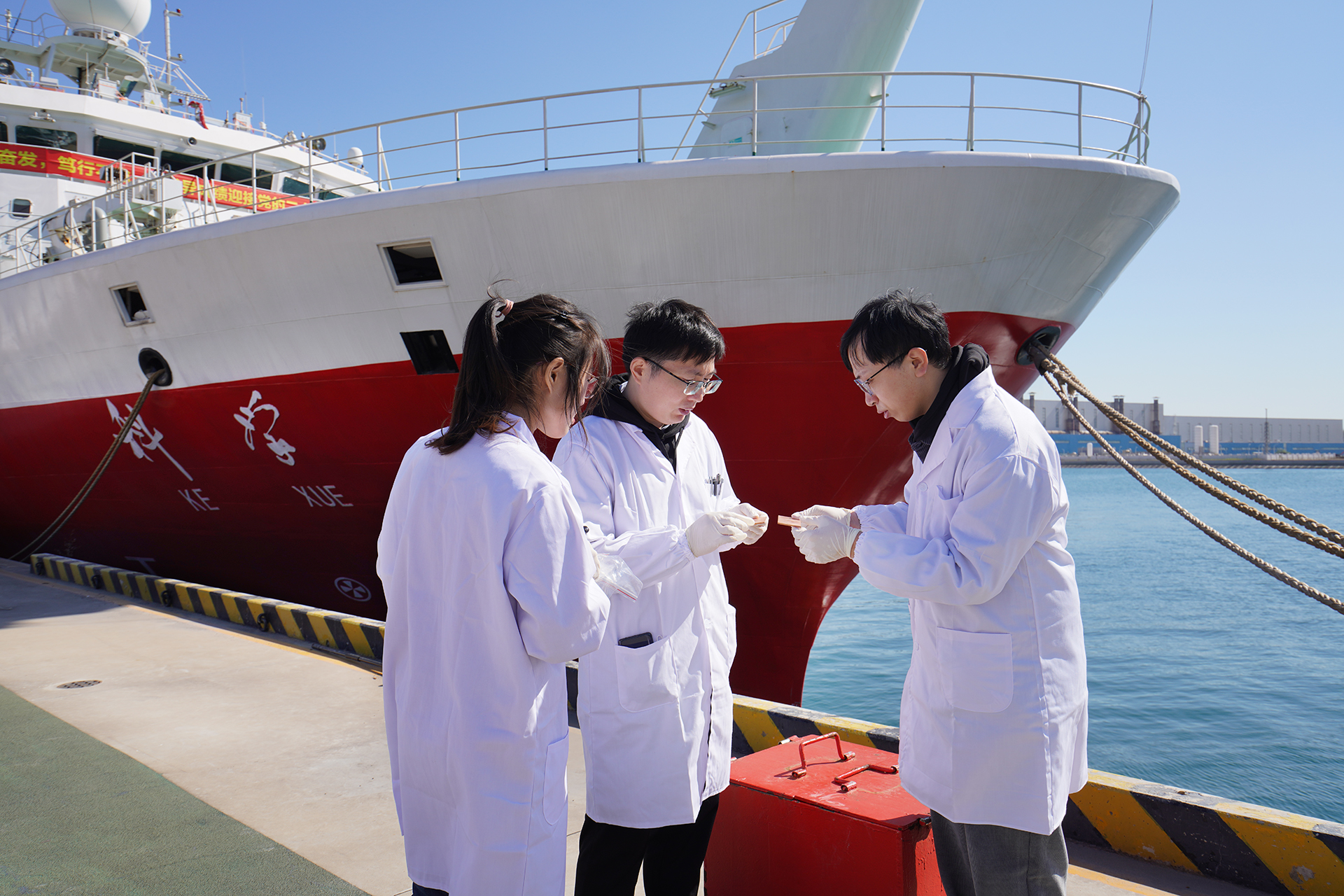(Text by ZHANG Ruiyong, ruiyong.zhang@qdio.ac.cn)

Ruiyong was discussing with colleagues about the preparation of metal samples used in in situ enrichment of corrosive microorganisms in marine (deep-sea) environments. Credit: Institute of Oceanology, Chinese Academy of Sciences
This image shows me during discussion with my colleagues MSc WANG Can and BSc SHI Xin about how to make suitable metal samples for in situ enrichment of corrosive microorganisms from marine environments. The exposure of such samples will help us to understand the processes in marine biofilm development and allow improved countermeasures (antibiocorrosion techniques).
Both bioleaching and biocorrosion are phenomenons describing dissolution of substrata into solution under the assistance of microorganisms. In former case, valuable metals are dissolved into the liquor from solid ores, e.g. metal sulfides (wanted). Biocorrosion refers to the process that functional materials are destroyed and dissolved into solution resulting in failure of materials (unwanted).
It is estimated that annual corrosion damages reached about 3000 billion last year in China and that 10-20 % of these damages were microbially influenced. On the other hand, the vast amount of marine mineral resources, such as polymetallic nodules, marine manganese crusts, and massive sulfide deposits on the seafloor, could help to meet the expanding demand for metals in China and other countries, as could the recovery of base and precious metals from e-wastes. Bioleaching technologies can be adapted to process these materials. I wish to elucidate the key factors influencing interfacial process of bioleaching and biocorrosion. In this way, green strategies to increase metal recovery from deep-sea and e-wastes and to inhibit biocorrosion in marine environments may be proposed.
(Editor: ZHANG Yiyi)

